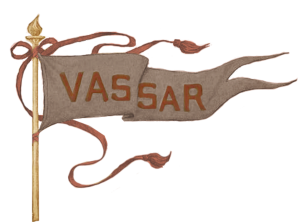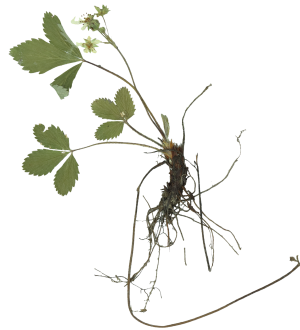1874 - 1953
Oliver Samuel Tonks, Professor Emeritus of Art, died
on December 25, 1953, one day before his eightieth
birthday. Born in Malden, Massachusetts, he took his
undergraduate and graduate work at Harvard where, in
1903, he received the first doctorate in Classical
Archaeology conferred by Harvard. He was also the
first student at Harvard to hold the Charles Eliot
Norton Fellowship for studies abroad in Archaeology,
spending 1901-02 in Greece. He began his long and
fruitful career in teaching, first as an instructor
in Greek at the University of Vermont, and then as
lecturer in Greek at Columbia University. From 1905
to 1911 he was a member of the department of Art and
Archaeology at Princeton.
Mr. Tonks came to Vassar in 1911 as Professor of Art
and continued as head of the department until his re-
tirement in l944, after thirty-three years of service.
In l9lh he was appointed curator of the Art Gallery
installed that year in the newly built Taylor Hall.
While studying for his doctorate he had served as
assistant curator of Classical Art at the Boston Museum
of Fine Arts; and throughout his career he was active
in the conduct and development of the Vassar Art Gallery,
one of the first of its kind to serve a vital function
in a college curriculum. His special interest in
Italian painting was a factor in the acquisition in
1917 of the large and important Pratt Collection. Many
valuable additions to the Gallery were made subsequently
because of his efforts.
when Mr. Tonks came to Vassar he was the sole member of
the department of Art; upon his retirement, the staff
numbered lh including a departmental assistant and an
Art Librarian. His appointment established at Vassar
the discipline of Art History, a relatively new field
of studies at that time. His strong conviction that
courses in drawing, painting and sculpture should be
an integral part of instruction in art led to the
appointment four years later of Professor Chatterton,
who reinstated courses in painting that had been among
the pioneer features of Matthew Vassar's college under
Professor Van Ingen. His generosity of spirit, his deep
wisdom and insight continued to sustain the growth and
development of the whole curriculum in art. Durtzg
his years as head of the department many scholars now
OLIVER SAMUEL TONKS (Continued)
distinguished in the field had an opportunity to launch
their careers at Vassar - Alfred Barr of the Museum of
Modern Art, Hyatt Mayor of the Metropolitan Museum,
Henry Russell Hitchcock of the Smith College Art Gallery
and John Coolidge new director of the Fogg Museum at
Harvard. He also fostered the new departure of adding
a course in architectural draughting and design in-
augurated by John McAndrew, now professor and director
of the gallery at Wellesley.
The breadth of his interest was shown in such activities
as his service on the managing committee of the American
School of Classical Studies in Athens, his chairmanship
of the committee to select the WPA murals for the Pough-
keepsie Postoffice, and his frequent contributions on
a wide range of subjects to various periodicals. An
article, "The Realism of Gothic Sculpture", appeared in
Vassar Mediaeval Studies in 1923, and his History of
Italian Faintin was published in 1927. In his lectures
and in his writings Mr. Tonks’ command of the English
language set a distinguished and enviable standard.
The venerable phrase "a scholar and a gentleman" could
never be more appropriately applied than in this in-
stance. He had the true gift of the teacher--of foster-
ing and encouraging learning, in his students, his
staff, and his own children, and this without a trace
of self-importance or professional jealousy. But Mr.
Tonks did not confine his interests to the academic
life on campus. For many years he was active in the
work of Christ Church, as a Vestryman and a member of
the editorial board of the Chronicle. Among his par-
ticular enjoyments were the meetings of a Poughkeepsie
group called "The Club", where papers were read and
discussions held on all manner of subjects. This Novem-
ber he contributed a paper on Modern Abstract Art.
Perhaps no member of our faculty ever commanded more
love and affection from his fellows. Although his active
association with the College ceased with his retirement,
his interest in the community did not diminish. His
companionship will be sorely missed by all those who
knew him.
Leila C. Barber
J. Howard Howson
Agnes R. Claflin
XIII - 433-434

